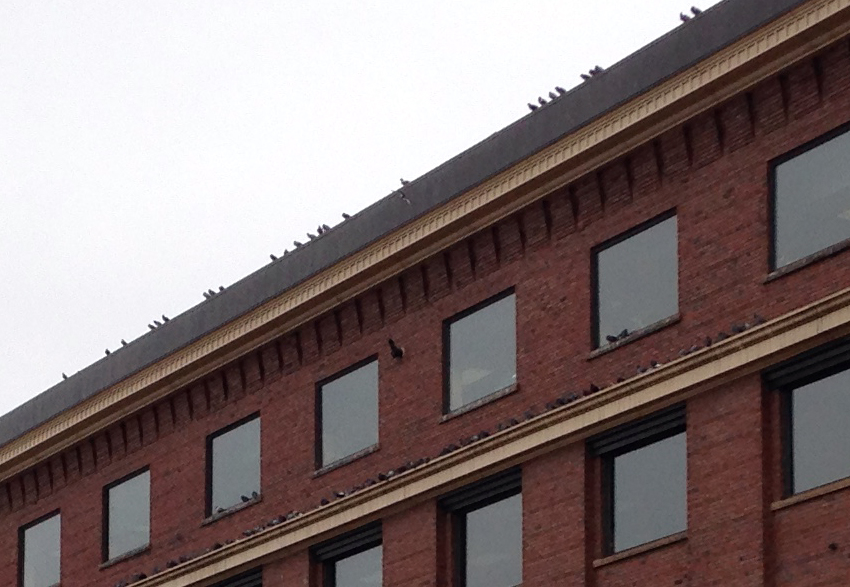I don’t think of them as airborne rats, although I know many do. I like the flash of wings, and the way a flock of pigeons turns and wheels like one creature. Now that we live in a downtown high-rise, I see that swooping flock behavior from above, as they rise together from a rooftop or settle at the same moment, or react to the passage of the neighborhood eagle over the river. I’m interested in the way they move against the urban landscape, and how they are all exactly alike, and also each different.
And they make a beautiful sound.
City life is noisy. We become used to the clunking of oil trains crossing the Mississippi, traffic noises and midnight drag races, sirens, the warning bells on the green line, the occasional shouts from the street. Windows open or closed is only a matter of adjusting the volume. The city, alive, is always around us.
Sometimes, though, there’s a moment when there are few, or no, people on the sidewalk bordering a street with less traffic. We’re between trains. It might even be snowing, each flake having a tiny quieting effect, as it does a tiny beautifying effect. Multiplied by billions, and both the quiet and the beauty are amplified by light falling from windows and streetlamps.
And in those quieter moments, I’ve noted, the rock doves can sometimes be heard. They are perching or roosting or resting on ledges and cornices and windowsills above the street – our variety of stately architecture mimics the cliffs they originally came from. It might be that the south-facing stone holds a little of the day’s heat for them. Perhaps they are talking to each other. Perhaps they are talking to the building, and the building is listening to them, a long-standing conversation. That wall and windows have been there since 1916 and the birds have been with us much longer.
The building I’m thinking of was commissioned by seminal railroad man James J. Hill near the end of his life, as the largest office building west of Chicago (a distinction it held until the 1971 opening of the IDS building in our sister city). It’s now called 180 East Fifth, but the south side I’m thinking of, that the pigeons seem to frequent, looms straight up over Fourth Street.
And, walking down the street in a quiet moment, we can hear them above. Not a dovecote, not a forest, not a park nearby; the starlings occupy the playground opposite. But a sound of nature, a sound of conversation in an unknown language, a sound of distant contentment in the very middle of our neighborhood, one more thread in the city tapestry of sound. Not rats, not rats at all.
Photo by, and courtesy of, Bill Lindeke. For his 2016 piece on urban pigeons, see https://www.minnpost.com/cityscape/2016/03/paradoxical-perspectives-urban-pigeons/






































